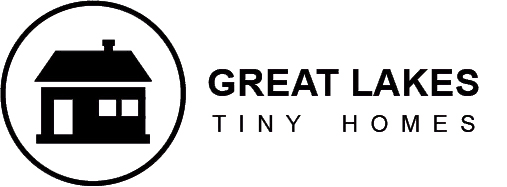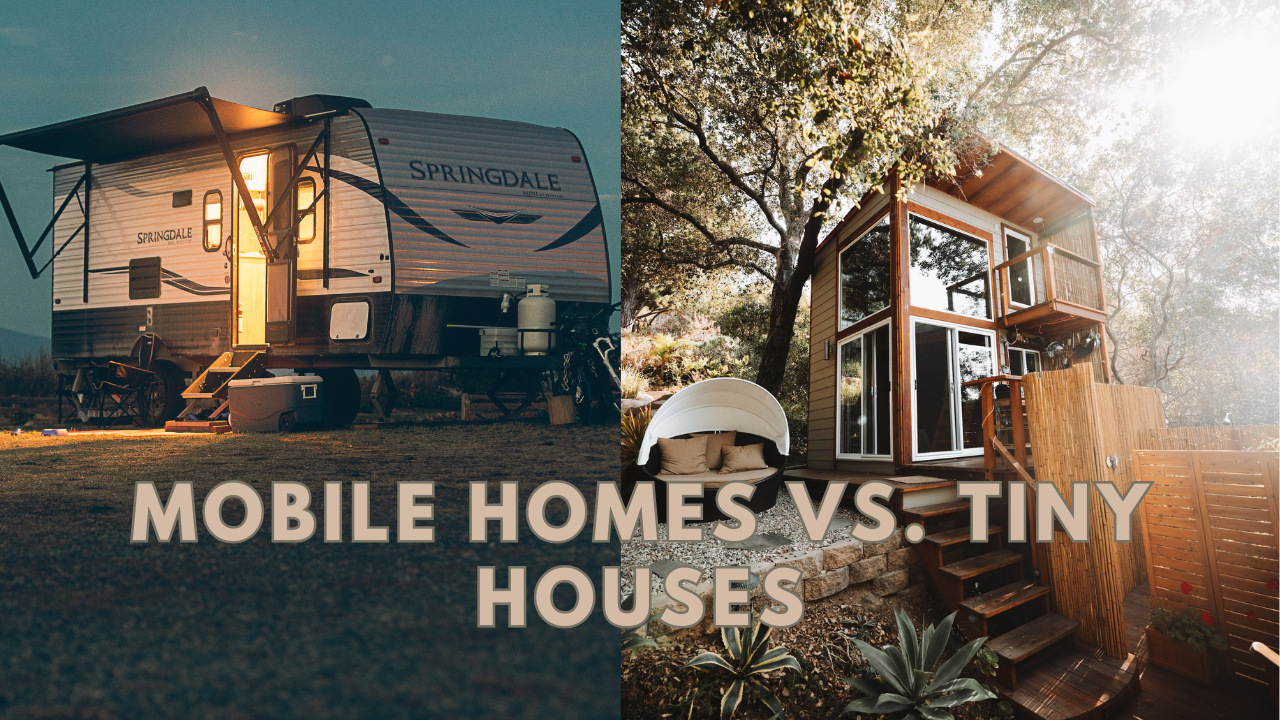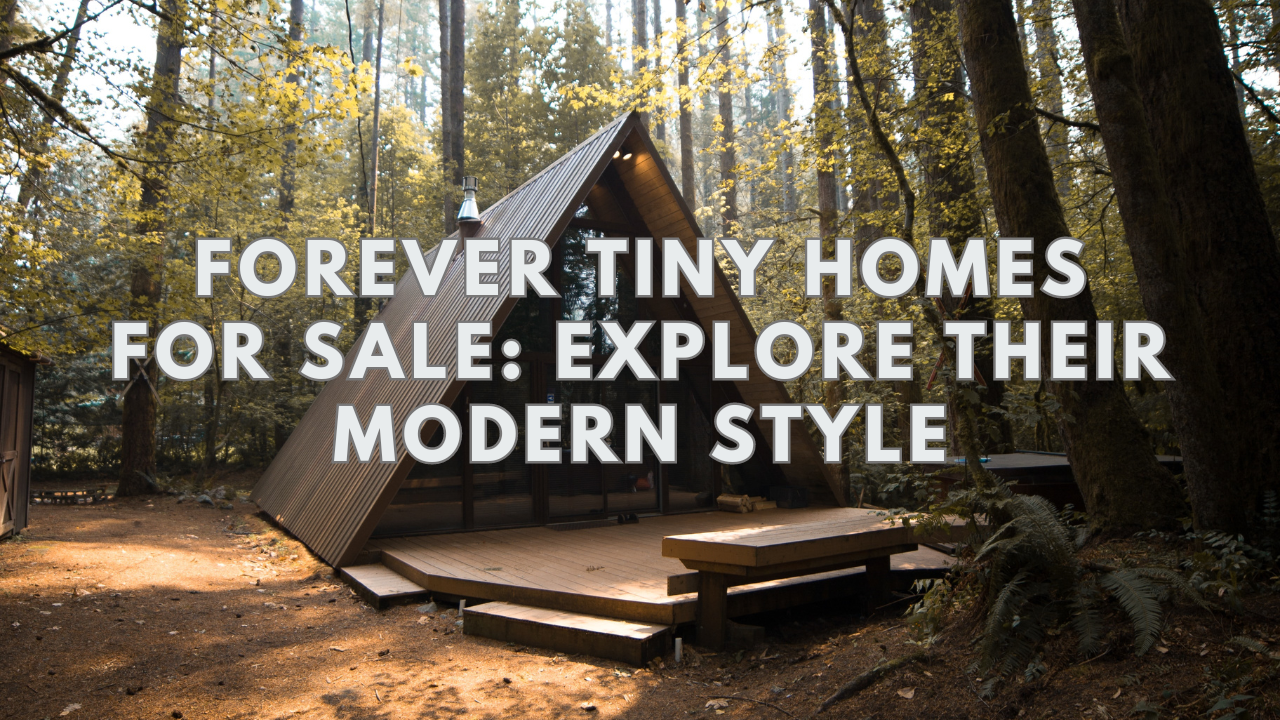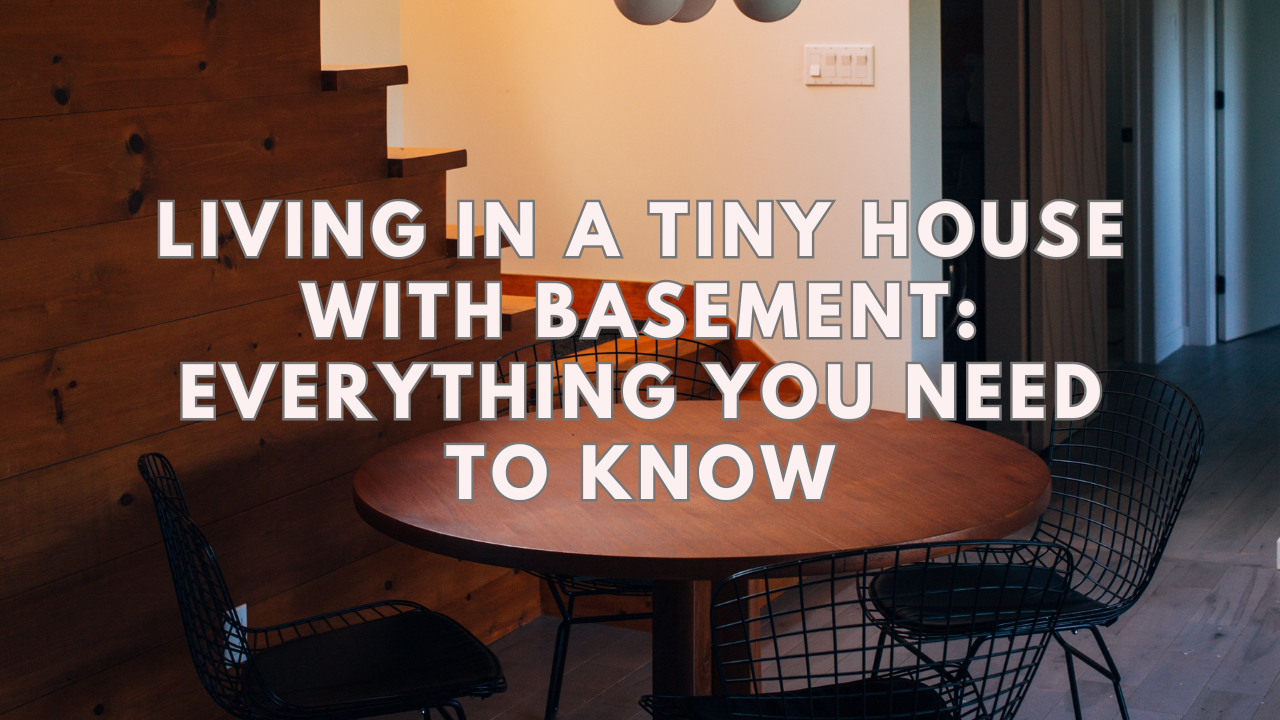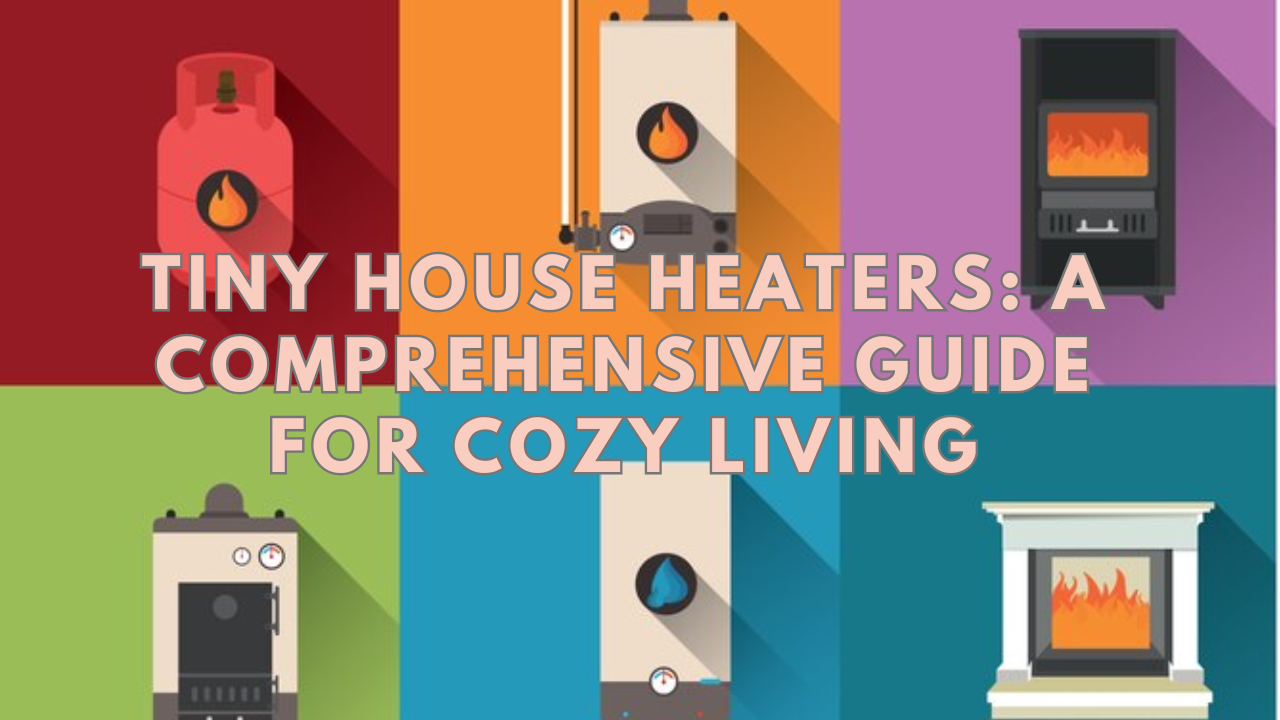Nowadays, tiny homes are an alternative housing solution because they offer simplicity, affordability, and sustainability. Likewise, there are two main types of tiny houses on the market.
In this article, we will explore the world of tiny homes, comparing the benefits and drawbacks of tiny homes vs. mobile homes, helping you decide which option may be the right fit for you.
A Tiny House: What Is It?
Tiny homes are between 100 and 400 square feet, or 5 to 20% smaller than a typical home’s 2,261 sqft. Although there’s no hard and fast rule about size, they rarely exceed 500 sqft.
A Mobile Home: What Is It?
Manufactured homes, commonly known as mobile homes, are constructed off-site under the federal Manufactured Home Construction and Safety Standards, or “HUD code.” After that, they are brought to the home site. A prefabricated home and a mobile home differ in the year of construction. In technical terms, it is a mobile home if it was constructed before 1976. It’s a manufactured home if it was constructed after 1976.
One mobile home typically has 480–1,440 sqft of space. A double-wide mobile home typically has between 640 and 2,560 sqft of space. Triple-wide mobile homes can have 960, 3,600, or more sqft of living space.
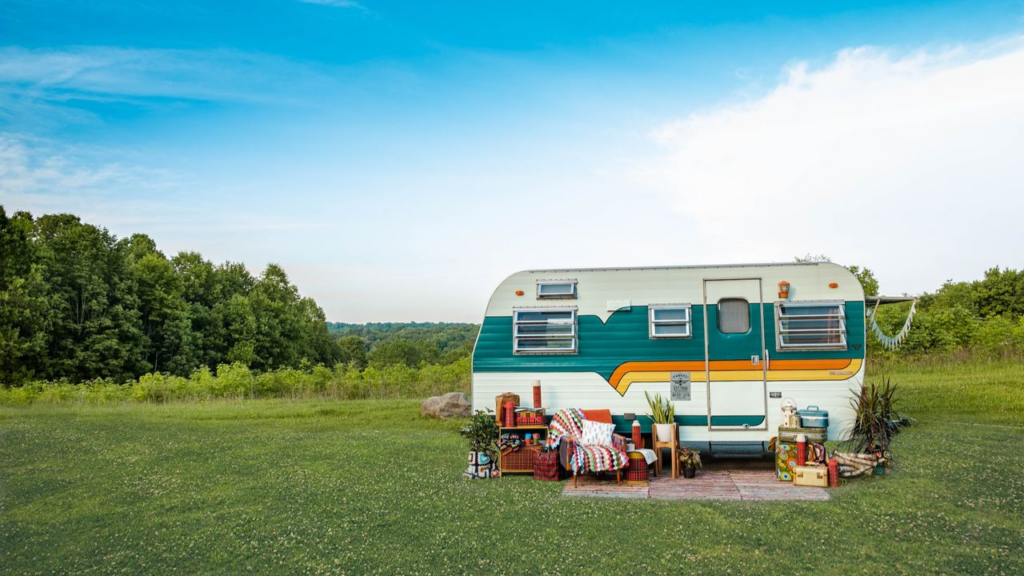
What Are the Benefits of Tiny Houses and Mobile Homes?
Both home living arrangements are smaller than the typical home, which makes them excellent choices for people who want to downsize. Both also have a plethora of customization possibilities and can be made to accommodate a wide range of demands and styles.
Tiny Houses Pros and Cons
Pros:
Moveable
The best approach to realizing your desire to lead a nomadic lifestyle is to live in a tiny house. Their design lets you move your residence from one place to another.
Independence
One characteristic of tiny dwellings is self-sufficiency. Usually through renewable energies like rainwater. Thanks to this, homeowners may live anywhere. Even in remote areas, they have what they need close at hand.
Durability
Tiny houses are highly sustainable due to their compact size. They need fewer building materials, and many builders use repurposed or salvaged materials. Additionally, tiny homes frequently incorporate environmentally friendly elements like solar panels and require less energy to operate, such as heat, water, and electricity.
Style choices
Since they are made to order, the possibilities are endless for creating a contemporary, rustic, extreme minimalist, or any other style of tiny home you may imagine.
Cons:
Less room
Living in a tiny house may not be feasible or viable for large families. Even for families of four people, the tiny house may be too small.
High price
While you can eventually save money on utilities, a tiny home’s average cost is typically more than that of a mobile home, at about $75,000.
Reduced capacity to store
Less storage room is perhaps the main drawback for most people, considering the tiny house movement. These apartments are small, so you have to be selective about what you bring with you and what you leave behind. Most homeowners have to give up some of their possessions.
Mobile Home Pros and Cons
Pros:
Affordable
While prices vary widely, you may spend about $25,000 on a beautiful mobile house. Even the most expensive mobile houses are between $60,000 and $75,000.
Bigger
If you want to downsize, you can do it without sacrificing any space—much more space than tiny homes allow.
Better for households
Families would do better with this option because the extra room in a mobile home will make daily living much more comfortable.
Greater freedom of location
There’s no negotiating the location of your dream home when you find it. However, mobile homes are built in factories, so you get to choose the location.
Cons:
Reduced movement
Moving a mobile home is not an easy task from a logistical standpoint, should the necessity arise. Usually, when you set it up, it stays there forever.
Not enough on its own
For example, mobile homes need different hook-ups and a dump station to work.
Fees and permits
You may be required to pay taxes and obtain licenses, particularly if you wish to add to or renovate the structure, according to the state in which you reside.
Devaluation
Mobile houses can lose value very rapidly.
The Main Difference Between Tiny Houses vs. Mobile Homes
They are also far less expensive than the typical home and can be tailored to almost any demand or style desire. The fact that both kinds of homes are typically exempt from property taxes is another benefit, but that is where the similarities end. Next, you can see the difference between the two:
Size
One of the distinctions between the two is that by 2023, mobile homes are predicted to be larger than tiny homes, with an average size of 1,172 square feet.
Typically, tiny homes range from 100 to 400 sqft and feature significantly smaller living and cooking spaces than mobile homes.
Regulations
Furthermore, tiny houses are small enough to go unnoticed, yet mobile homes are subject to state and federal restrictions because of their larger size. Because of this distinction, tiny homes allow you to accomplish anything you want.
Mobility
Mobile homes are not completely mobile, despite their name. To move one, you will need a moving permit, which can cost anywhere from $1,000 to $10,000, based on its dimensions, location, and whether the moving company needs to disassemble the house beforehand. Typically, mobile homes are moved when the owner sells the house and has to buy a new plot of land or when the owner sells the house and needs to relocate it themselves.
Those tiny homes on wheels (THOW) are designed to be mobile. When it comes to movement, they are far more adaptable. Ensure that the tiny house is roadworthy and complies with standardized requirements across the United States since it is to obtain RVIA (Recreational Vehicle Industry Association) certification before moving it to new areas. To remain in many RV parks, you must have an RVIA tag.
Maintenance
Depending on the kinds of items utilized, maintenance for THOWs and manufactured homes may vary. Manufactured home maintenance is identical to that of a traditional home.
On the other hand, Tiny Home on Wheels requires routine maintenance due to normal building wear and tear and movement-related cleaning. Because this is on wheels, there is also the upkeep of the tires, wheel, chassis, and brake lights.
Amenities
Tiny house builders created manufactured homes and Tiny Houses on Wheels with similar features to their conventional counterparts.
But one significant distinction to take into account is the space. You can make a manufactured home longer and broader, which allows you to accommodate more appliances. You can choose to have larger bathrooms and bedrooms as well.
Quality
Mobile homes had lax regulations until 1976. Mobile houses from this era frequently had high energy costs, subpar electricity and insulation, and bad leaks. However, in 1976, the Housing and Urban Development Code established higher-quality manufactured home criteria.
In comparison to mobile homes, tiny homes are more skillfully constructed and, although manufactured in a factory, more closely resemble traditionally built dwellings. Given that demand for tiny homes is at an all-time high, the newest designs and construction techniques are used in their creation.
Cost
The typical price of a tiny house on wheels is approximately $60,000, while actual expenses will vary greatly depending on the cost of materials, appliances, land, and other factors. Tiny homes are available for as low as $10,000 and as much as $200,000.
However, used mobile homes may be purchased for about $25,000, but brand-new ones cost between $50,000 and $250,000.
Aesthetics
Because they are constructed on assembly lines, mobile homes can vary in width—one, two, or triple-wide. Nevertheless, they all have a relatively similar appearance. Although builders may differ, this choice typically has a mass-production appearance.
In terms of design, tiny homes provide a lot of options. Many alternatives are available for them, including square, rectangle, two-story, and single-story designs. In a compact home, you have more creative license over the layout, fixtures, and fittings.
Speed of Build
You can have a manufactured home in just a couple of weeks because they are constructed in factories using an assembly line. Just place an online order for one.
Building a little house can take longer, particularly if you are doing it yourself. Professionals can construct a tiny house in about 120 hours. However, if you are DIY, it will take at least 500 hours, if not more.
FAQs
Are Tiny and Mobile Houses Equal?
A mobile home is not the same as a tiny house. Larger, less costly, and subject to government regulation under the HUD code are the characteristics of mobile homes.
Which State Is Ideal for Building a Tiny Home in Your Land?
States with zoning rules and regulations that facilitate the construction and living of tiny homes include California, Colorado, Oregon, and Texas. These states are considered among the most “tiny home-friendly” in the United States. Even in these states, though, localities and counties may have different specific laws.
What Is the Price of a Tiny House?
Tiny homes usually cost between $30,000 and $60,000, with an average price of $45,000. The price of a tiny house might range from $8,000 to $150,000. Compared to the average cost of a regular home, which is $150 per square foot, the average cost is $300 per square foot countrywide. However, building a modest house still costs less.
What Is the Price of a Mobile Home?
The cost of a mobile home is $128,000. A single-wide mobile home is $87,700, or roughly $90 per square foot; a double-wide is $156,300, or around $61 per sqft. The price of mobile homes varies depending on the area and other features.
Which Is Preferable: Living in an RV or a Tiny House?
Depending on what you need and want, a compact dwelling offers greater customization and security. However, if you intend to travel frequently, an RV would be a better fit for your requirements.
Conclusion
Those who wish to live a non-traditional lifestyle have access to both tiny homes and mobile homes. Depending on the conditions and individual tastes of the prospective owners, they each offer advantages and disadvantages.
Thus, it is crucial to conduct an in-depth study and balance the advantages and disadvantages before selecting one over the other.
